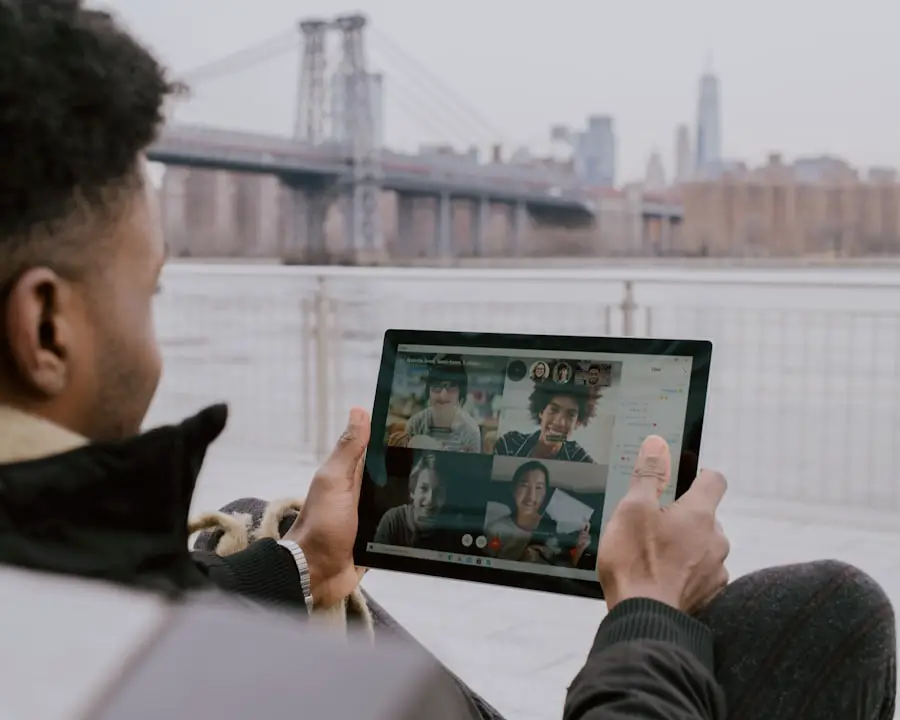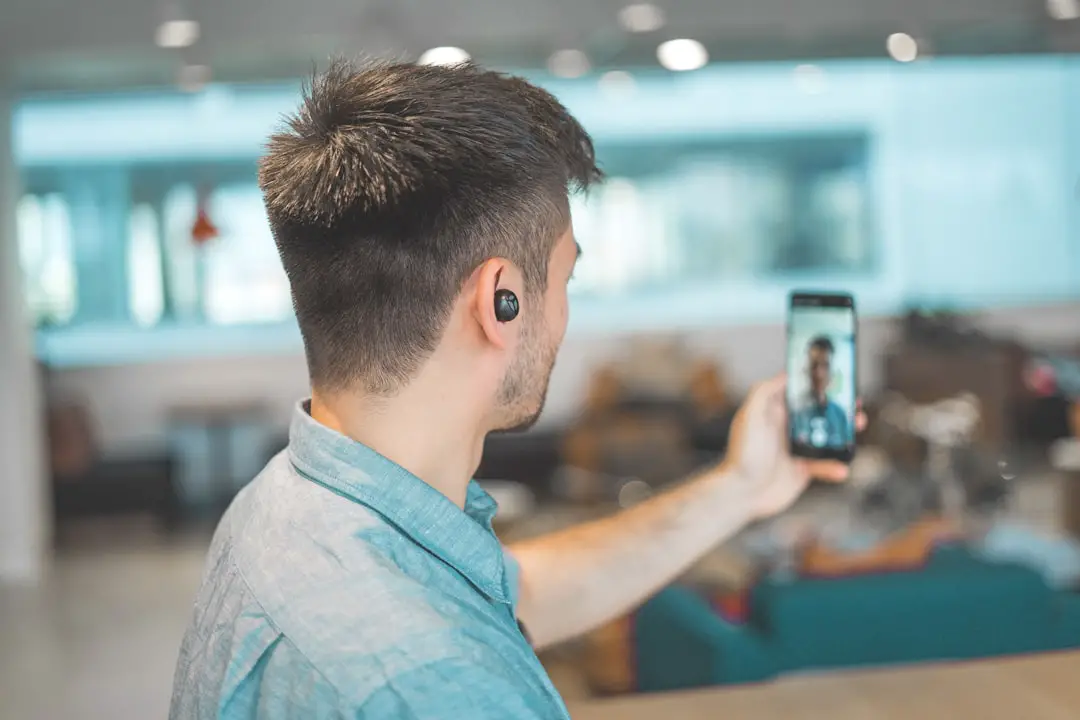FaceTime is a proprietary video and audio calling application developed by Apple Inc., designed to facilitate seamless communication between users of Apple devices. Launched in 2010, FaceTime has become a cornerstone of Apple’s ecosystem, allowing users to connect with friends, family, and colleagues through high-quality video and audio calls. The application is integrated into various Apple devices, including iPhones, iPads, and Macs, making it easily accessible for millions of users worldwide.
One of the defining features of FaceTime is its user-friendly interface, which allows individuals to initiate calls with just a few taps. The app supports both one-on-one and group calls, accommodating up to 32 participants in a single session, which is particularly useful for family gatherings or virtual meetings. The technology behind FaceTime leverages Apple’s proprietary protocols, ensuring that calls are encrypted end-to-end.
This means that only the participants in the call can access the content of their conversation, providing a layer of security that is increasingly important in today’s digital landscape. Additionally, FaceTime utilizes the device’s internet connection—either Wi-Fi or cellular data—to facilitate calls, which can result in significant cost savings compared to traditional phone calls, especially for international communication. The application also supports features such as Animoji and Memoji, allowing users to express themselves creatively during calls.
Overall, FaceTime represents a significant advancement in communication technology, combining ease of use with robust security features.
Key Takeaways
- FaceTime is a video and audio calling app developed by Apple, exclusively for iOS and Mac devices.
- FaceTime is not compatible with Android devices, but there are alternative video calling apps available for Android users.
- Some popular alternatives to FaceTime for Android users include Google Duo, Skype, WhatsApp, and Zoom.
- To FaceTime with Android users, consider using cross-platform apps like Google Duo or Skype, which are available on both iOS and Android devices.
- FaceTime offers features like group calling, Animoji and Memoji support, while Android video calling apps offer features like screen sharing and virtual backgrounds.
FaceTime and Android Compatibility
Seeking Alternative Solutions
The lack of cross-platform functionality has led many to seek alternative video calling options that can bridge the gap between different operating systems. However, there are some workarounds that allow Android users to engage with FaceTime indirectly.
Indirect Engagement
For instance, an Android user can initiate a FaceTime call with an Apple user, then use a third-party application to share their screen or video feed. However, this method is not ideal, often resulting in a degraded experience due to latency and quality issues. It also requires both parties to have a stable internet connection and may involve additional steps that complicate the calling process.
The Growing Demand for Cross-Platform Compatibility
Ultimately, while it remains an exclusive feature for Apple users, the demand for cross-platform compatibility continues to grow as more people seek to connect with loved ones across different devices.
Alternatives to FaceTime for Android Users

Given the limitations of FaceTime for Android users, several alternative applications have emerged that offer similar functionalities while supporting cross-platform communication. One of the most popular alternatives is Zoom, which gained immense popularity during the COVID-19 pandemic as people turned to virtual meetings and social gatherings. Zoom allows users to host video calls with up to 1,000 participants in its paid version and offers features such as screen sharing, virtual backgrounds, and breakout rooms.
Its user-friendly interface and robust features make it an excellent choice for both personal and professional use. Another noteworthy alternative is Google Meet, which is integrated into Google’s suite of productivity tools. Google Meet allows users to initiate video calls directly from their Google Calendar or Gmail accounts, making it convenient for those who already use these services.
The platform supports high-definition video calls and offers features like real-time captions and screen sharing. Additionally, Google Meet is accessible via web browsers on both desktop and mobile devices, ensuring that users can connect regardless of their operating system. Other alternatives include Microsoft Teams and WhatsApp Video Calls, each offering unique features tailored to different user needs.
How to FaceTime with Android Users
| Platform | Compatibility | Features |
|---|---|---|
| FaceTime (iOS) | Only for iOS devices | Video and audio calls, group calls, Animoji and Memoji |
| Google Duo (Android) | Available for Android and iOS | Video and audio calls, group calls, end-to-end encryption |
| Skype | Available for Android and iOS | Video and audio calls, group calls, screen sharing, instant messaging |
While direct FaceTime calls between Apple and Android devices are not possible, there are creative methods that can facilitate communication between the two platforms. One approach involves using third-party applications that allow screen sharing or video streaming from an Android device to an Apple device. For example, an Android user can utilize applications like Zoom or Skype to initiate a video call with an Apple user.
In this scenario, the Android user would start a call on their chosen platform and invite the Apple user to join via a link or meeting code. Another method involves using social media platforms that support video calling features. For instance, Facebook Messenger allows users on both iOS and Android devices to engage in video calls seamlessly.
An Android user can initiate a call through Messenger and invite their Apple counterpart to join the conversation without any compatibility issues. This workaround not only enables communication but also allows users to leverage existing social media accounts for video calling purposes.
Features of FaceTime and Android Video Calling Apps
FaceTime boasts several features that enhance the user experience during video calls. One of its standout attributes is the ability to switch between front and rear cameras seamlessly during a call, allowing users to share their surroundings or showcase specific items without interrupting the conversation flow. Additionally, FaceTime supports high-definition video quality, ensuring that participants can see each other clearly even in varying lighting conditions.
The inclusion of Animoji and Memoji adds a fun element to conversations, enabling users to express emotions through animated characters that mimic their facial expressions. In contrast, many Android video calling apps offer unique features tailored to diverse user needs. For instance, Zoom provides virtual backgrounds that allow users to customize their environment during calls, which can be particularly useful for professional meetings or casual chats at home.
Google Meet includes real-time captions powered by Google’s speech recognition technology, making conversations more accessible for individuals with hearing impairments. Furthermore, apps like WhatsApp offer end-to-end encryption for video calls, ensuring that conversations remain private and secure.
Security and Privacy Concerns with FaceTime and Android Video Calling Apps

Security and privacy are paramount considerations when using any video calling application. FaceTime employs end-to-end encryption for all calls, meaning that only the participants involved can access the content of their conversations. This level of security is crucial in an age where data breaches and privacy violations are increasingly common.
However, there have been instances where vulnerabilities were discovered within the app, leading to concerns about potential exploits that could compromise user privacy. Similarly, many Android video calling apps have faced scrutiny regarding their security measures. While platforms like Zoom have made significant strides in enhancing security protocols following early criticisms during the pandemic, concerns about data privacy remain prevalent among users.
For example, Zoom’s initial lack of end-to-end encryption raised alarms about potential unauthorized access to meetings. In contrast, applications like Signal prioritize privacy by offering robust encryption methods and minimal data retention policies. Users must remain vigilant about the security features of their chosen video calling app and stay informed about any updates or changes that may affect their privacy.
Tips for Improving Video Calls on Android Devices
To enhance the quality of video calls on Android devices, users can implement several practical tips that optimize their experience. First and foremost, ensuring a stable internet connection is crucial; using Wi-Fi instead of cellular data can significantly improve call quality by reducing latency and minimizing interruptions caused by weak signals. Additionally, positioning oneself in a well-lit area can enhance visibility during calls; natural light is often preferable as it provides even illumination without harsh shadows.
Another effective strategy involves closing unnecessary applications running in the background before initiating a video call. This action frees up system resources on the device, allowing the video calling app to function more smoothly without lag or freezing issues. Users should also consider using headphones or earbuds with built-in microphones to improve audio clarity; this setup minimizes background noise and enhances sound quality for both parties involved in the conversation.
Future Outlook for FaceTime and Android Integration
As technology continues to evolve at a rapid pace, the future outlook for FaceTime and its integration with Android devices remains uncertain yet intriguing. The demand for cross-platform compatibility is growing as more individuals seek seamless communication options regardless of their device preferences. While Apple has historically maintained a closed ecosystem for its applications, there are indications that they may explore opportunities for broader compatibility in response to user feedback.
On the other hand, Android developers are continuously innovating their video calling applications to meet user demands for enhanced features and security measures. As competition intensifies among various platforms, it is likely that we will see advancements in interoperability between different operating systems in the coming years. This evolution could lead to new solutions that allow FaceTime users to connect with Android users more easily while maintaining high standards of security and privacy.
In conclusion, while FaceTime remains an exclusive feature for Apple users with limited compatibility for Android devices, various alternatives exist that facilitate cross-platform communication. As technology progresses and user expectations evolve, there may be opportunities for greater integration between these two ecosystems in the future.
If you are wondering if you can FaceTime with Android users, you may be interested in reading an article on the privacy policy of video calling apps. Understanding how your personal information is handled during video calls is important, especially when connecting with users on different platforms. To learn more about privacy policies in video calling apps, check out this article.
FAQs
What is FaceTime?
FaceTime is a video and audio calling app developed by Apple. It allows users to make video and audio calls between Apple devices such as iPhone, iPad, and Mac.
Can you FaceTime with an Android phone?
No, FaceTime is only available on Apple devices and is not compatible with Android phones.
Are there alternatives to FaceTime for Android users?
Yes, there are several alternatives to FaceTime for Android users, such as Google Duo, Skype, WhatsApp, and Facebook Messenger. These apps allow for video and audio calls between Android and Apple devices.
Can you use FaceTime on a Windows PC?
No, FaceTime is not available for Windows PCs. It is only compatible with Apple devices.
Is FaceTime free to use?
Yes, FaceTime is free to use for Apple device users. However, data charges may apply depending on your internet connection.
